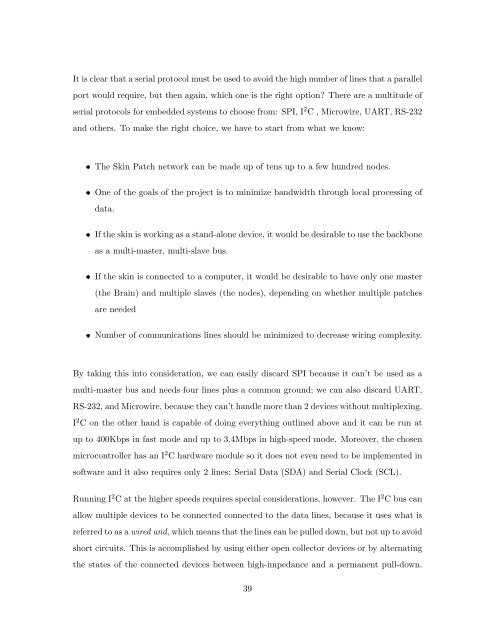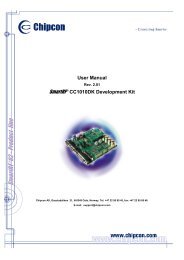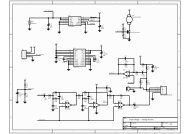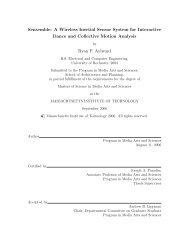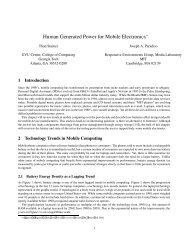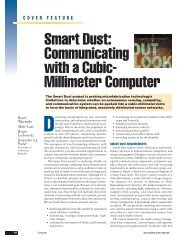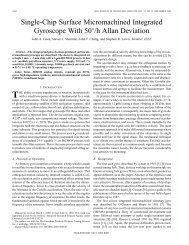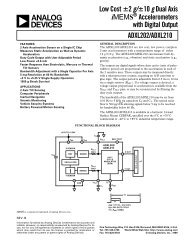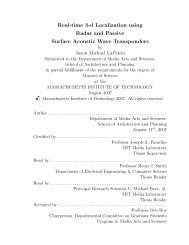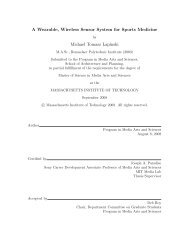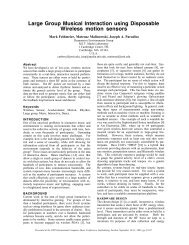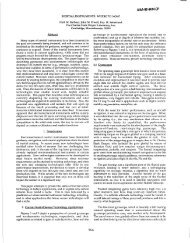S.N.A.K.E.: A Dynamically Reconfigurable Artificial Sensate Skin ...
S.N.A.K.E.: A Dynamically Reconfigurable Artificial Sensate Skin ...
S.N.A.K.E.: A Dynamically Reconfigurable Artificial Sensate Skin ...
Create successful ePaper yourself
Turn your PDF publications into a flip-book with our unique Google optimized e-Paper software.
It is clear that a serial protocol must be used to avoid the high number of lines that a parallel<br />
port would require, but then again, which one is the right option? There are a multitude of<br />
serial protocols for embedded systems to choose from: SPI, I 2 C , Microwire, UART, RS-232<br />
and others. To make the right choice, we have to start from what we know:<br />
The <strong>Skin</strong> Patch network can be made up of tens up to a few hundred nodes.<br />
One of the goals of the project is to minimize bandwidth through local processing of<br />
data.<br />
If the skin is working as a stand-alone device, it would be desirable to use the backbone<br />
as a multi-master, multi-slave bus.<br />
If the skin is connected to a computer, it would be desirable to have only one master<br />
(the Brain) and multiple slaves (the nodes), depending on whether multiple patches<br />
are needed<br />
Number of communications lines should be minimized to decrease wiring complexity.<br />
By taking this into consideration, we can easily discard SPI because it can’t be used as a<br />
multi-master bus and needs four lines plus a common ground; we can also discard UART,<br />
RS-232, and Microwire, because they can’t handle more than 2 devices without multiplexing.<br />
I 2 C on the other hand is capable of doing everything outlined above and it can be run at<br />
up to 400Kbps in fast mode and up to 3.4Mbps in high-speed mode. Moreover, the chosen<br />
microcontroller has an I 2 C hardware module so it does not even need to be implemented in<br />
software and it also requires only 2 lines: Serial Data (SDA) and Serial Clock (SCL).<br />
Running I 2 C at the higher speeds requires special considerations, however. The I 2 C bus can<br />
allow multiple devices to be connected connected to the data lines, because it uses what is<br />
referred to as a wired and, which means that the lines can be pulled down, but not up to avoid<br />
short circuits. This is accomplished by using either open collector devices or by alternating<br />
the states of the connected devices between high-impedance and a permanent pull-down.<br />
39


